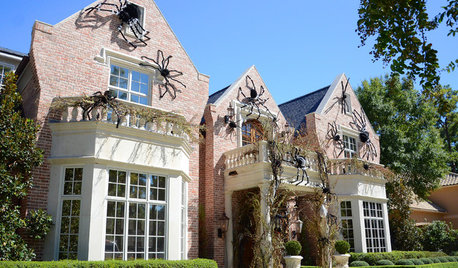Anyone else have this damage-causing critter?
transplanted2scin07
14 years ago
Related Stories

LIFEHow to Outsmart Backyard Critters
Learn to think like a raccoon, skunk or squirrel to keep your home safe and your garden intact
Full Story
KITCHEN DESIGNThe Cure for Houzz Envy: Kitchen Touches Anyone Can Do
Take your kitchen up a notch even if it will never reach top-of-the-line, with these cheap and easy decorating ideas
Full Story
LAUNDRY ROOMSThe Cure for Houzz Envy: Laundry Room Touches Anyone Can Do
Make fluffing and folding more enjoyable by borrowing these ideas from beautifully designed laundry rooms
Full Story
BUDGET DECORATINGThe Cure for Houzz Envy: Living Room Touches Anyone Can Do
Spiff up your living room with very little effort or expense, using ideas borrowed from covetable ones
Full Story
WINDOW TREATMENTSA Surefire Way to Prevent Sun Damage Indoors
Why let light ruin your furniture, floors and artwork, when the solution could be as simple as applying high-quality window film?
Full Story
RUGSPrevent Slips and Floor Damage With the Right Rug Pad
Here's what to know about sizes, materials, costs and maintenance of this important companion to your area rugs
Full Story
HOUSEKEEPINGDon't Touch Another Stain Before You Read This
Even an innocent swipe with water may cause permanent damage. Here's what to know about how rugs and fabrics react
Full Story
FUN HOUZZSurvey Says: We’re Scared of Being Home Alone — and Spiders
A new Houzz survey reveals that most of us get spooked in an empty house. Find out what’s causing the heebie-jeebies
Full Story
FARM YOUR YARDRemake Your Backyard Into a Mini Farm
You can get a taste of country life by line-drying your laundry, growing some produce or going whole hog with the critters
Full Story
DISASTER PREP & RECOVERYHow to Combat Mold in a Flooded House
Before you rebuild or restore your water-damaged home, take these steps to keep mold at bay
Full Story





dottie_in_charlotte
nckvilledudes
Related Professionals
Simpsonville Landscape Architects & Landscape Designers · Winder Landscape Architects & Landscape Designers · Pottstown Landscape Contractors · Waterbury Landscape Contractors · Concord Landscape Contractors · Peabody Landscape Contractors · Wakefield Landscape Contractors · Hickory Hills Landscape Contractors · Lakeville Landscape Contractors · San Benito Landscape Contractors · South Hackensack Landscape Contractors · Wanaque Landscape Contractors · Whitehall Landscape Contractors · Wilsonville Landscape Contractors · Vadnais Heights Landscape ContractorsUser
dottie_in_charlotte
frogview00
User
transplanted2scin07Original Author
transplanted2scin07Original Author
mongo13
dottie_in_charlotte
dottie_in_charlotte